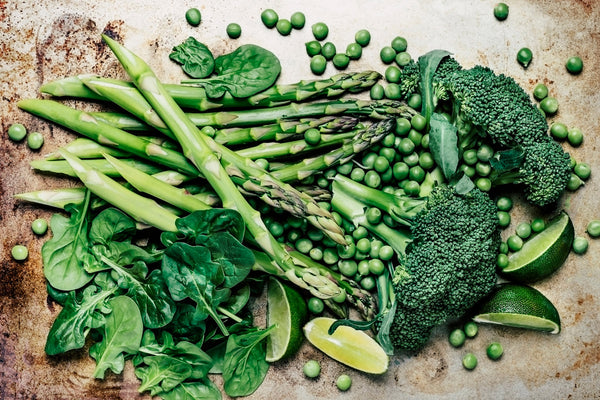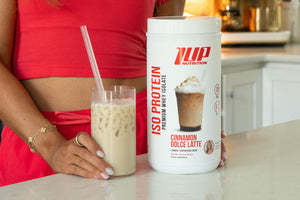There is no shortage of diets that can work for weight loss; Zone Diet, Balance Diet, Low Carb, Carb Cycling, Keto, Paleo, Primal, Mediterranean, IIFYM, etc. When applied logically, then can be (and have been) successful for helping individuals lose weight and improve health.
While each diet is slightly different and has its own set of foods that are approved or discouraged, they all share a common trait -- they seek to reduce the amount of hyper-processed, micronutrient-poor foods in the diet and aim to increase the amount of minimally processed, whole foods.
Here is a list of 11 very healthy foods you should be eating regularly no matter if your goal is muscle gain, fat loss, or overall health & wellness.
#1 Leafy Greens
Quite simply, dark leafy greens are some of the most micronutrient-abundant plant foods on the planet. They’re high in non-heme iron, magnesium, chlorophyll, and numerous other polyphenols, vitamins, and minerals.
Moreover, they’re high in fiber and water and low in calories, which helps to fill you up without taking a huge chunk of calories out of your daily calorie limits.
Some of our favorite leafy greens are spinach, kale, collard greens, and mustard greens.
If you’re not a big fan of greens, try “sneaking” them into your meals, such as adding frozen spinach to your smoothies or omelets, mixing some into a batch of marinara sauce, or tossing a handful into a bowl of soup or stew.
To further augment your intake of greens (or for those occasions when you’re on-the-go and don’t have time to make a full meal), add a scoop of 1UP Organic Vegan Greens & Reds to your shaker (either with a scoop of whey protein or on its own).
#2 Wild Alaskan Salmon
Wild Alaskan salmon is one of the best sources of protein available, and it’s also high in omega-3 fatty acids -- an essential type of dietary fat that has anti-inflammatory properties. Grilled, broiled, pan-seared, or baked, wild salmon is absolutely delicious.
For a great-tasting meal that’s also easy-to-fix, pair grilled salmon with a side of steamed spinach or grilled asparagus!
#3 Avocado
Most commonly consumed as guacamole, avocado is a fatty fruit that’s actually extremely healthy. It’s rich in monounsaturated fats, essential vitamins, and fiber.
Beyond guacamole, avocado is also an ideal inclusion in omelets, salads, or on sandwiches and wraps, either sliced or smashed as a spread in lieu of mayonnaise (which really doesn’t offer much nutritional benefit).
#4 Extra Virgin Olive Oil
A staple of the Mediterranean diet, extra virgin olive oil is another rich source of monounsaturated fats. It may have lost some popularity in recent years with the rise of coconut oil, but the fact remains that EVOO is one of the healthiest fats on the planet.
In addition to its fatty acid profile, EVOO also contains important phytochemicals that have antioxidant, anti-inflammatory, and antimicrobial properties. It also contains a compound called oleuropein, which is known to support cardiovascular health, glycemic profile, and thyroid function.
#5 Berries
The term “superfood” is thrown around a lot, and while there is no textbook definition of what classifies a food as “super,” it essentially means a food that is loaded with vitamins, minerals, polyphenols, and antioxidants.
When taking those factors into account, berries easily qualify as an undeniable superfood.
They’re rich in vitamins and minerals, and they contain a bounty of beneficial phytochemicals, which support cognitive, cardiovascular, and metabolic health.
For a long time it was thought that berries (and fruit in general) were detrimental to fat loss on account of their sugar content. But, the truth is that while berries do contain sugar, it also contains water, fiber, and a bevy of vitamins and minerals. Plus, fruits are low in calories.
All of this is to say is that fruit is incredibly healthy and does not need to be avoided.
A couple of our favorite ways to enjoy berries, in particular, is tossing a handful of frozen berries into a protein smoothie or mixing a serving into greek yogurt or oatmeal.
#6 Walnuts
Nuts are typically viewed as a food that should be avoided when trying to lose weight on account of their high fat content. However, research actually shows that there are many benefits to consuming a serving a nuts per day, including weight loss.[1,2]
Walnuts are also a rich source of plant-based omega-3 fatty acids.
#7 Chia Seeds
Building off of the previous point, chia seeds (like walnuts) are another great source of plant-based omega-3 fatty acids.
Additionally (much like walnuts), they can be added to smoothies, oatmeal, or yogurt to up the nutrition as well as add a bit of texture and flavor.
And, as with many of the other foods on this list, chia seeds are a good source of dietary fiber (which not only supports healthy digestion but also helps keep you full). In fact, just one tablespoon of chia seeds contains about 3 grams of belly-filling fiber.
If you’re looking to further support digestive health and increase your intake of natural fiber, it may be helpful to consider a fiber supplement, such as 1UP Fiber Plus, which includes 8 grams of natural fiber, including Cold Milled Golden Flaxseed -- another healthy seed, much like chia seed.
#8 Beans
Plant-based diets have gained enormous popularity in recent years as many people seek to reduce their meat consumption and increase their intake of plant sources of protein.
Beans are high in protein as well as complex carbohydrates and fiber. FYI, they’re also high in antioxidants, too.
A ½ cup of beans contains 7 grams of protein, 8 grams of fiber, and a mere 110 calories.
Furthermore, beans also support cardiometabolic health as they’ve been known to help improve cholesterol profiles and glycemic control.
Beans come in many varieties and are highly versatile. They can be the focal point of a dish (a al New Orleans-style Red Beans & Rice), or as a component of salads, soups, stews. Certain beans (e.g. black beans) can also form the base for low-carb, high protein desserts, such as brownies!
#9 Red Cabbage
A vastly under-utilized vegetable, red cabbage (and really all varieties of cabbage) can be a delicious addition to your meal plan. It’s low in calories, high in fiber, and can be served a number of ways -- in a salad, in coleslaw, or pickled and put in a sandwich or wrap.
Red cabbage, in particular, is also rich in anthocyanins -- a type of polyphenol that serves as an antioxidant and fights free radicals.
#10 Broccoli
A decades-long staple of bodybuilders, broccoli is a cruciferous veggie that really needs no introduction or explanation.
It’s high in vitamin C, fiber, water, and a whole host of other micronutrients that support health and wellness.
The typical way to serve broccoli is steamed alongside a serving of rice and grilled chicken; however, that only begins to scratch the surface of how to incorporate broccoli into your daily diet.
It can be eaten raw as part of a crudite platter. It can also be shredded and incorporated into slaw. And, to top it off, you can mix it into casseroles, stir-fry, and pasta.
#11 Cinnamon
A delicious spice that’s most commonly experienced in baked goods (as well as those pumpkin spice lattes we crave when the temperatures begin to cool), cinnamon actually has quite a number of health benefits.
Chief among them is its ability to support healthy blood sugar levels.
Cinnamon is also high in various antioxidants, and it’s consumption has been associated with improved cholesterol, improvements in nausea and PMS symptoms, and less inflammation.[3]
In addition to spritizing the top of your gourmet coffee with cinnamon, you can also add a dash to your smoothie, oatmeal, yogurt, or chili (trust us, it’s delicious) to boost the nutritional value t and reap the benefits of this delicious spice.
References
- Rock CL, Flatt SW, Barkai HS, Pakiz B, Heath DD. Walnut consumption in a weight reduction intervention: effects on body weight, biological measures, blood pressure and satiety. Nutr J. 2017 Dec 4;16(1):76. doi: 10.1186/s12937-017-0304-z. PMID: 29202751; PMCID: PMC5715655.
- Freisling, H., Noh, H., Slimani, N. et al. Nut intake and 5-year changes in body weight and obesity risk in adults: results from the EPIC-PANACEA study. Eur J Nutr 57, 2399–2408 (2018). https://doi.org/10.1007/s00394-017-1513-0
- Gunawardena D, Karunaweera N, Lee S, van Der Kooy F, Harman DG, Raju R, Bennett L, Gyengesi E, Sucher NJ, Münch G. Anti-inflammatory activity of cinnamon (C. zeylanicum and C. cassia) extracts - identification of E-cinnamaldehyde and o-methoxy cinnamaldehyde as the most potent bioactive compounds. Food Funct. 2015 Mar;6(3):910-9. doi: 10.1039/c4fo00680a. PMID: 25629927.






